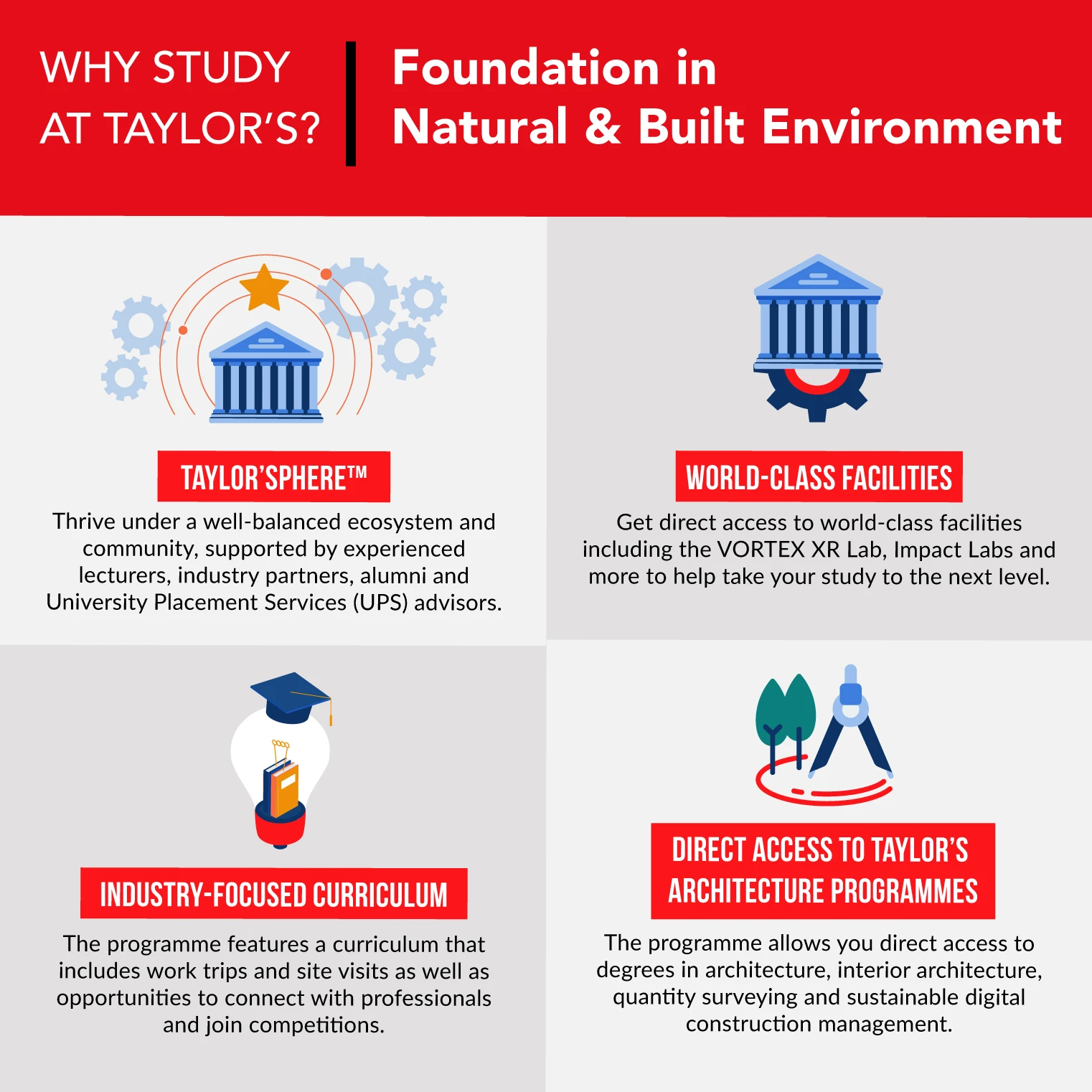11 Jobs You Can Do With an Architecture Degree
Architecture can pave the way to many diverse careers beyond the traditional architect. From revolutionising city planning to designing video game worlds, explore the variety of jobs you can do.
Updated 08 Apr 2024


If you’re interested in the field of architecture, chances are your focus is to become a licensed architect. And while that may be the dream for many, an architecture degree can actually open doors to a ton of other cool careers that you may not have realised.
Architecture equips you with a unique blend of creative, analytical and problem-solving skills, paving the road to plenty of diverse paths beyond the role of a traditional architect. You could revolutionise city planning, design video game worlds or even help build a terraformed colony on Mars.
In this article, we showcase a variety of jobs in architecture — both traditional and unconventional — that you can go into with an architecture degree.
#1. Residential architect

Residential architects specialise in working with living and residential spaces such as houses, apartments and condominiums. They work closely with clients to ensure that the final product meets the clients’ needs and preferences in terms of space and style while also making sure the design is safe, functional and adheres to safety and health regulations.
Having to balance artistic sensibilities with technical considerations can make the work challenging. However, seeing a finished home become a family’s cherished space can be highly satisfying. For those looking to blend creativity with purposeful design, being a residential architect can be a rewarding career.
#2. Landscape architect

A landscape architect is someone who designs and plans outdoor spaces such as parks, gardens and public spaces. They are responsible for making sure that the space fulfils its aesthetic, environmental and functional goals while ensuring that it fits well with the natural environment. It’s a job that requires knowledge of not only architectural and engineering principles but also climate and weather, topography, and natural features.
With a combination of both outdoor and indoor responsibilities, landscape architecture offers the opportunity to work closely with nature while positively impacting communities.
Pro Tip:
Transition smoothly from secondary school to a Degree in Architecture with Taylor’s Foundation in Natural and Built Environment. Ask us about this 1-year foundation programme.
#3. Commercial architect

Commercial architects specialise in designing and developing commercial areas. This includes spaces like shopping malls, retail outlets and business districts.
As a commercial architect, the spaces you design must facilitate commerce and support business activities, weighing in on factors such as accessibility, lighting, ventilation and foot traffic flow. You’ll also need to be familiar with commercial zoning practices as they are different from residential regulations.
With many diverse projects and opportunities, you may find yourself designing a sleek office tower one day and a sprawling shopping centre the next. The variety and potential for creativity can make commercial architecture a fun and fulfilling career path to explore.
#4. Industrial architect

Industrial architects are focused on the design and construction of industrial facilities such as factories, warehouses and manufacturing plants. Each industry comes with its own unique demands and specifications and you’ll need to navigate complex building requirements for specialised equipment, efficient supply chains and safety regulations.
With thoughtful design, industrial architects can make a significant impact on a company’s success, boosting efficiency, reducing waste and uplifting worker experiences.
#5. Sustainability architect

Want to do more for the environment? Sustainability architects are professionals who specialise in designing environmentally-friendly buildings and structures to minimise the negative impact they have on the environment. This is achieved by incorporating green resources and using conscious design features such as natural ventilation, daylighting and rainwater harvesting to lessen wasteful energy use. The scope of your design can range from a building to an entire urban area.
Sustainability architecture is a growing field with a great potential for making a positive impact. By designing buildings that are energy efficient, resource efficient and environmentally friendly, they can contribute to the preservation of our planet and its resources.
Did You Know?
Taylor’s Foundation in Natural and Built Environment programme incorporates real-life simulations, out-of-classroom field and study trips, and exposure to working professionals and competitions, providing you with practical experiences beyond theoretical knowledge. Speak to our advisors to learn more about the programme.
#6. Conservation architect

Conservation architects use their architectural knowledge to conserve old architectural pieces and heritage buildings. Instead of tearing down old buildings to make way for new architecture, conservation architects do what they can to preserve the buildings as they are, allowing minimal repairs to prevent further degradation and potential ruin.
The profession is particularly important in countries with a rich cultural heritage such as Malaysia. By protecting sites of historic, architectural or cultural significance, conservation architects ensure future generations can experience and appreciate the beauty and history of these places.
#7. Urban planner

Urban planners design cities, towns and other urban areas, ensuring the people who work and live there have access to essential services such as transport, hospitals, schools and parks. The scale of the job is vast as they don’t only design isolated structures but entire communities where every element must function harmoniously together.
As an urban planner, you’re expected to be proficient in not only design and architecture practices, but also land use, zoning laws and other urban infrastructures. You’ll also need to resolve complex challenges such as affordable housing, traffic congestion and environmental sustainability.
With people increasingly moving to cities and urban areas, the job of an urban planner has never been more important.
#8. Interior designer

Interior designers are in charge of designing functional, safe and aesthetically pleasing interior spaces of various buildings including residential homes, offices, hotels and restaurants. Their goal is to optimise functionality, aesthetics and overall ambience to meet the specific needs and preferences of their clients while adhering to budget requirements and safety standards.
As an interior designer, you must have a strong understanding of spatial design and know how to maximise the use of a particular space. Your responsibilities can span from designing the layout of the room to selecting the exact finishings and material of a piece of furniture.
If transforming spaces and playing with colours, textures and furnishings have always been a passion of yours, interior design can be a rewarding career.
Did You Know?
Taylor’s Architecture programme is ranked among the top 200 in the world (QS World University Rankings by Subject 2023). Choose excellence and start your journey here.
#9. Furniture designer

Furniture designers design furniture that elevates a space while fulfilling its functional purpose. You don’t have to come from an architectural background to become one but the skills you learn in the programme can come in very handy when designing your pieces. Your understanding of functional and structural design will help you design usable and durable pieces that are aesthetically striking as well.
It may seem an odd career choice for an architecture graduate but many renowned architects have dabbled in furniture design. Big names like Zaha Hadid, Frank Gehry and Le Corbusier have created a range of iconic furniture pieces such as the biomorphic Moon System sofa set, the whimsical cardboard Wiggle Chair and the minimalistic LC3 Collection.
#10. Set designer

Set designers transform fantasy into reality by designing the physical environments and settings of a production. Their work transports audiences from the mundane to the magical, ranging from film (think the Barbie Dreamhouse from Greta Gerwig’s Barbie) and television (what’s more iconic than the Central Perk orange couch from Friends) to theatre (just take a look at the vibrant set of the hit Broadway musical Hairspray). The scale of the work can go from a room to a whole city.
As a set designer, you hold the power to elevate a production’s storytelling by creating breathtaking and tangible worlds. It’s a job that not only requires sound knowledge in architectural principles, but also artistic ingenuity and creativity.
Pro Tip:
Both Taylor’s Degree and Master of Architecture are recognised by the Board of Architects Malaysia, allowing students to be exempted from the LAM Part I and Part II Examination and easing their pathway to becoming professional architects. Find out more by speaking to our advisors.
#11. Exhibition designer

Exhibition designers are experts in designing layouts, displays and fixtures for events, shows, galleries and large exhibitions. Their role is to effectively communicate a theme or message to the audience while creating a memorable experience.
There’s more to an exhibit than arranging items neatly and placing a fixture or two. A good exhibition plays on design psychology to entice its visitors. As an exhibition designer, your role is to masterfully orchestrate the space to create exhibitions that educate, entertain and inspire.















